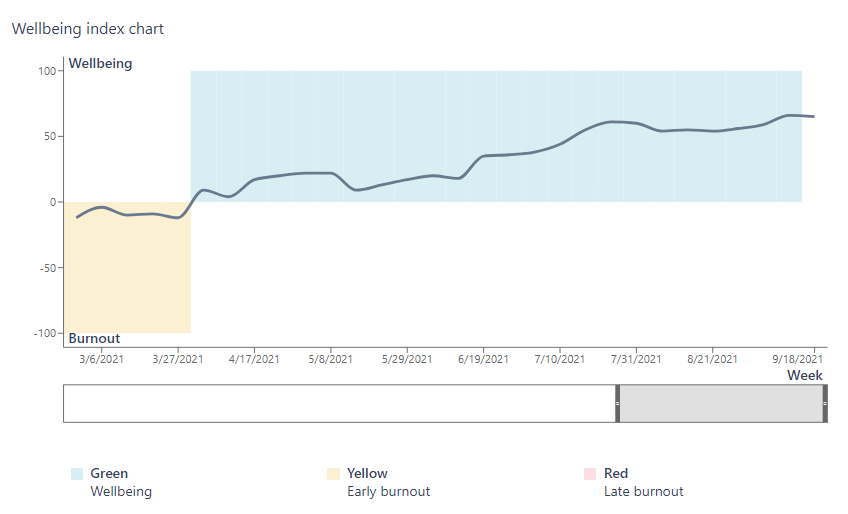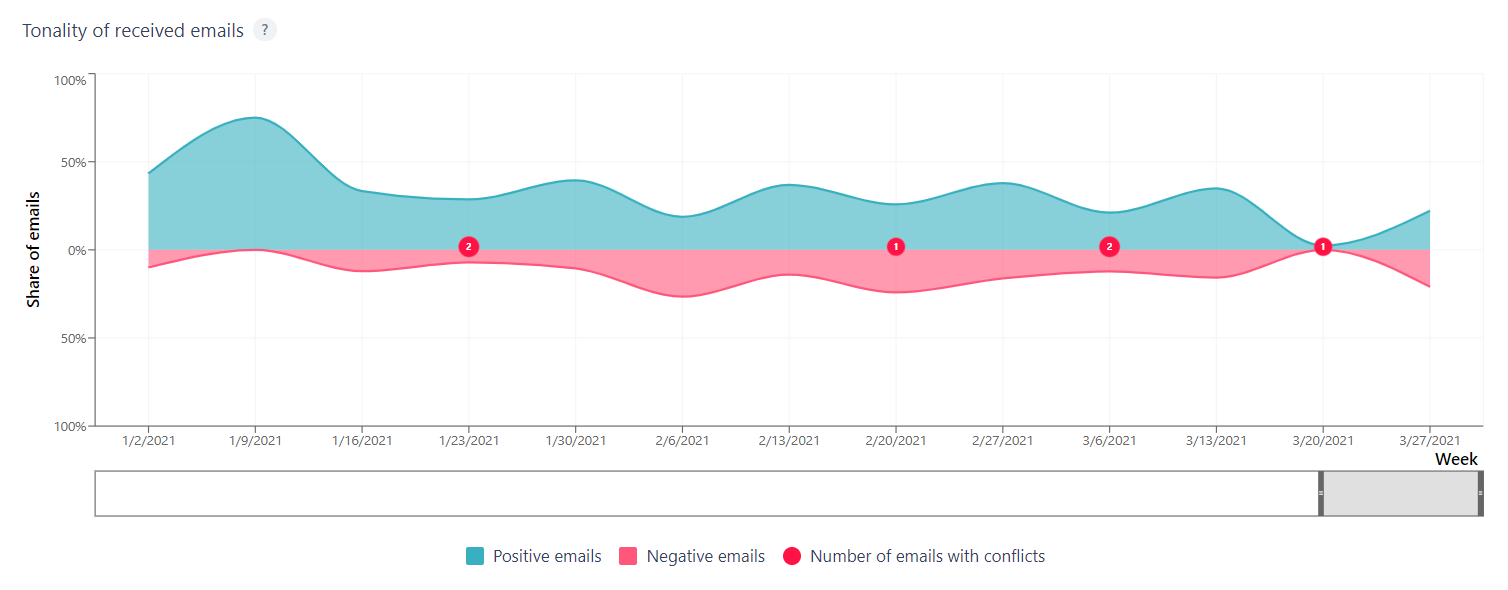Employee wellbeing. Work at the individual level
When dealing with burnout of a particular employee, your main task is to identify the reasons of his condition, to understand whether you can influence them, and to decide on further steps.
For each employee, you can see an Yva wellbeing index chart that looks like this:

The graph shows:
Yva wellbeing Index
The value of the employee's well-being level digitized by the model. The model analyzes employee behavior patterns according to 17 communication parameters. Communication patterns are ways or manners or features of people's behavior. That is, the model knows more features of people's behavior in different sources.The chart fill
It shows the fact and duration of the employee's stay at a particular stage of wellbeing or burnout.
The system identifies three zones of wellbeing:
The green zone is the wellbeing of the employee.
The yellow zone is the early burnout, the employee falls into this zone when the Yva wellbeing index is less than 0.
Red zone — is the late burnout, it can be possible that the employee is looking for a job. An employee falls into the red zone if his Yva wellbeing index has been consistently below 0 for more than 8 weeks.
How one can understand the causes of burnout of certain employee
Using the ruler at the bottom of the diagram, maximize the period for which the diagram is available for this employee. Look at burnout dynamics of this employee.
If the employee is in the red zone for a short time, find out whether he had similar periods before, and how quickly he managed to overcome such periods. If the employee was in the red zone before, and his current state does not last longer than back then, so, perhaps, his state will stabilize in a while. Monitor dynamics of this employee and, if you understand that there is no improvement, take an appropriate action.
Consider the period in which optimism of the employee began to decline. Look at this period (add 1-1.5 months to it) in the Tonality of sent emails diagram in "Working time and communication intensity" section. Perhaps the downturn of optimism can be explained by a conflict with one of the colleagues or managers. On the diagram, you will see the number of conflicts (shown as a circled number) and the amount of negativity in emails sent to this employee (the width of the red line).

Pay attention to the Tonality of received emails diagrams in "Internal communication" and "External communication" sections. They reflect the amount of negativity and conflicts in emails sent by the employee himself. So, you will see how much of a reaction of the employee provoked each situation.
If you find out that the conflict did precede the burnout, you should talk to the employee, try to identify the causes of the conflict and resolve it.
Open Group Report and examine results of the department engagement. Find out what the employees of this department are satisfied or unsatisfied with, perhaps it will allow you to identify the problems that could lead to burnout.
Ask for the employees' opinion on the issues that cause the greatest dissatisfaction in the department. In an informal conversation you can not only confirm the fact of burnout, but also find out its causes and draw up an action plan.